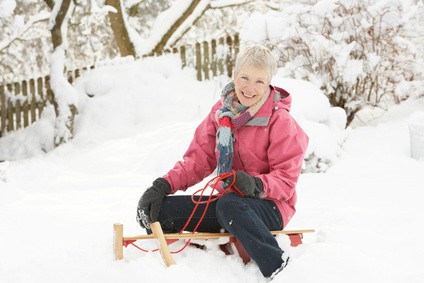Seniors and Seasonal Affective Disorder

Seasonal Affective Disorder (also known as SAD) is a kind of depression that happens at the same time every year. For most people, the symptoms of Seasonal Affective Disorder start in the late fall and carry on into the winter months. Most of us experience some kind of seasonal changes in energy, eating patterns, sleep patterns and feelings of well being. The winter blues are common amongst Canadians, but some people experience more intense changes. Changes that are strong enough to be a form of clinical depression “ this is SAD.
SAD is believed to be caused by lack of sunlight, serotonin and melatonin fluctuations, changes in body temperature and disruptions to the bodys circadian rhythms. Like many mental health conditions, genetics, age and the bodys chemical balance will all contribute to the likelihood of developing SAD.
About 2 to 6% of Canadians have experienced SAD. While seasonal affective disorder is found in adults of all ages, older adults may have lifestyle factors that put them at higher risk. Seniors with mobility issues may get much less time outdoors and less exposure to natural sunlight. The recent death of a loved one and feelings of isolation can also increase the risk of developing SAD.
Symptoms of Seasonal Affective Disorder
- Lethargy
- Oversleeping
- Withdrawal from social contacts
- Disinterest in activities
- Weight gain
- Carbohydrate cravings
- Anxiety
- Irritability
Treatment for Seasonal Affective Disorder
There is no cure for SAD, but it can be managed. Consult a doctor for advice on treatment options
Here are some additional tips and lifestyle changes that can help seniors cope with SAD.
Light therapy
Using a light box for 30-45 minutes daily is believed to help reset the bodys rhythms and balance brain chemicals. The light from the light box is 10-20 times brighter than ordinary indoor lighting and is used to simulate sunlight. Consult your doctor for advice on buying and using a light box.
Bring more light inside
Open the curtains and blinds, move any furniture that blocks light, and trim any outdoor shrubs or trees that are blocking windows. Consider adding a skylight.
Get outside
If possible, get outside on sunny days, even when its cold. Outdoor light, even on overcast days, is still often brighter than light from a light box.
Exercise
Physical activity can help relieve stress, anxiety and fatigue. As a proven mood lifter, regular exercise can be very helpful in managing SAD.
More questions?
Want to speak to a care expert about how to ensure the safety of your loved one during these uncertain times?
Let's connect you with the closest available Qualicare expert in your city to answer your questions.
The Qualicare Difference
Comprehensive care planning led by experienced Care Experts
"Qualicare changed everything. Mom loves her new companion, meanwhile Jack and I have peace of mind and more time to focus on the kids. "
Janette Aldermaine


 Have Questions?
Have Questions?